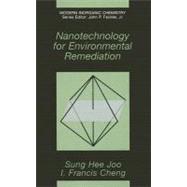
| Preface | v | ||||
| Acknowledgments | vii | ||||
| Abbreviations and Symbols | xiii | ||||
| Chapter 1. Introduction | 1 | (4) | |||
|
2 | (1) | |||
|
3 | (2) | |||
| Chapter 2. Literature Review | 5 | (20) | |||
|
5 | (7) | |||
|
5 | (2) | |||
|
7 | (1) | |||
|
8 | (1) | |||
|
9 | (1) | |||
|
10 | (1) | |||
|
11 | (1) | |||
|
12 | (10) | |||
|
12 | (1) | |||
|
13 | (3) | |||
|
16 | (2) | |||
|
18 | (4) | |||
|
22 | (3) | |||
| Chapter 3. Nanoscale ZVI Particles Manufacture and Analytical Techniques | 25 | (16) | |||
|
25 | (3) | |||
|
26 | (2) | |||
|
28 | (7) | |||
|
28 | (6) | |||
|
34 | (1) | |||
|
34 | (1) | |||
|
34 | (1) | |||
|
35 | (2) | |||
|
35 | (1) | |||
|
36 | (1) | |||
|
37 | (2) | |||
|
39 | (2) | |||
|
40 | (1) | |||
|
40 | (1) | |||
| Chapter 4. Oxidative Degradation of the Thiocarbamate Herbicide, Molinate, Using Nanoscale ZVI | 41 | (42) | |||
|
41 | (1) | |||
|
41 | (17) | |||
|
41 | (1) | |||
|
42 | (2) | |||
|
44 | (1) | |||
|
45 | (7) | |||
|
52 | (1) | |||
|
53 | (2) | |||
|
55 | (1) | |||
|
56 | (2) | |||
|
58 | (6) | |||
|
60 | (1) | |||
|
60 | (1) | |||
|
61 | (3) | |||
|
64 | (1) | |||
|
64 | (5) | |||
|
67 | (2) | |||
|
69 | (1) | |||
|
69 | (4) | |||
|
69 | (4) | |||
|
73 | (1) | |||
|
73 | (7) | |||
|
73 | (2) | |||
|
75 | (4) | |||
|
79 | (1) | |||
|
79 | (1) | |||
|
80 | (3) | |||
| Chapter 5. Molecular Oxygen Activation by FeII/III EDTA as a Form of Green Oxidation Chemistry* | 83 | (14) | |||
|
83 | (2) | |||
|
85 | (2) | |||
|
87 | (1) | |||
|
88 | (3) | |||
|
91 | (3) | |||
|
94 | (1) | |||
|
95 | (2) | |||
| Chapter 6. Quantification of the Oxidizing Capacity of Nanoparticulate Zero-Valent Iron and Assessment of Possible Environmental Applications | 97 | (26) | |||
|
97 | (1) | |||
|
98 | (22) | |||
|
98 | (1) | |||
|
98 | (2) | |||
|
100 | (1) | |||
|
101 | (2) | |||
|
103 | (1) | |||
|
103 | (6) | |||
|
109 | (1) | |||
|
109 | (1) | |||
|
110 | (3) | |||
|
113 | (2) | |||
|
115 | (5) | |||
|
120 | (3) | |||
| Chapter 7. Conclusions and Future Research Needs | 123 | (6) | |||
|
123 | (1) | |||
|
124 | (1) | |||
|
125 | (2) | |||
|
127 | (2) | |||
| Chapter 8. References | 129 | (18) | |||
| Appendix A: XRD Analysis of ZVI Collected from Four Different Samples | 147 | (2) | |||
| Appendix B: XRD Analysis of ZVI Collected from Four Different Samples | 149 | (2) | |||
| Appendix C: ELISA Analysis Methodology | 151 | (4) | |||
| Appendix D: Oven Programs for GC/MS Analysis of Pesticides | 155 | (2) | |||
| Appendix E: Experimental Conditions for Pesticides and Preliminary Screening Studies Using Nanoscale ZVI | 157 | (6) | |||
| Index | 163 |
The New copy of this book will include any supplemental materials advertised. Please check the title of the book to determine if it should include any access cards, study guides, lab manuals, CDs, etc.
The Used, Rental and eBook copies of this book are not guaranteed to include any supplemental materials. Typically, only the book itself is included. This is true even if the title states it includes any access cards, study guides, lab manuals, CDs, etc.